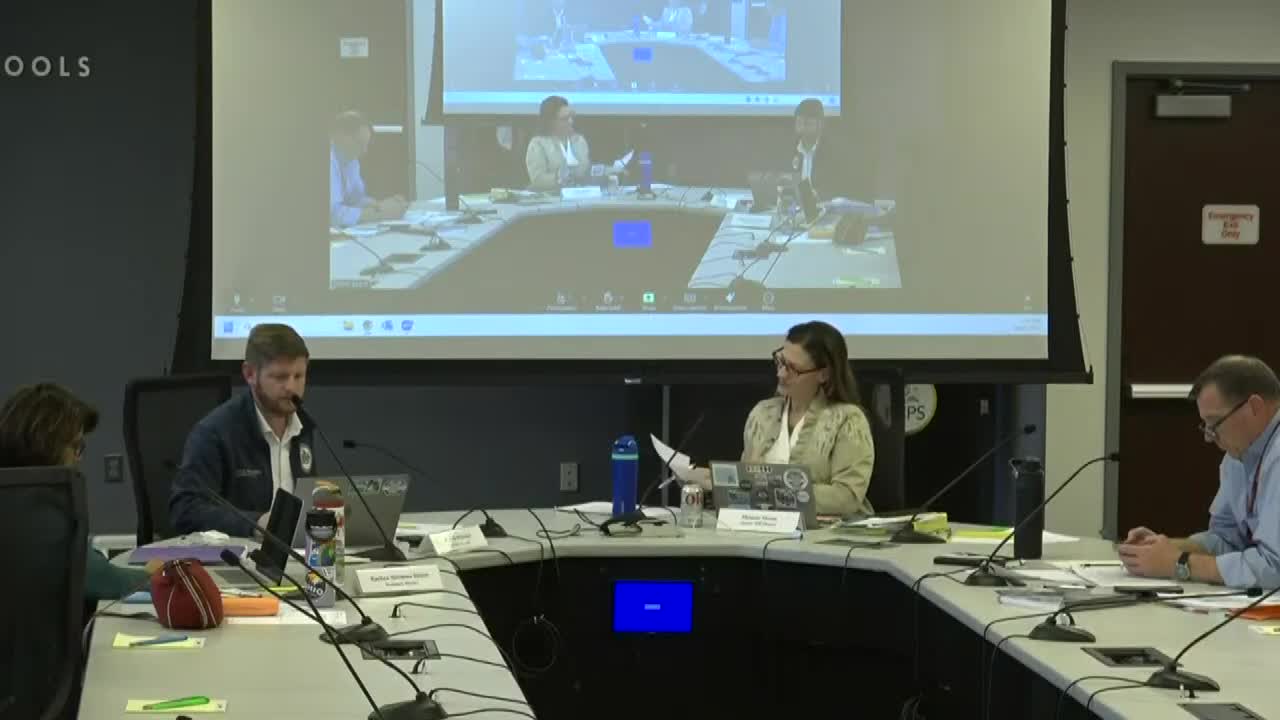Fairfax schools add design-build and construction-manager-at-risk to procurement options
October 31, 2025 | FAIRFAX CO PBLC SCHS, School Districts, Virginia
This article was created by AI summarizing key points discussed. AI makes mistakes, so for full details and context, please refer to the video of the full meeting. Please report any errors so we can fix them. Report an error »

The Comprehensive Planning and Development Committee on Oct. 30 heard an update that the School Division’s procurement options will now explicitly include design-build and construction-manager-at-risk (CMAR) in addition to keeping traditional design-bid-build.
Chair McDaniel said the change is intended to add “more tools in our tool belt” for construction and renovation projects as the industry evolves. A staff presenter explained the practical differences: design-bid-build remains the slowest procurement path; design-build is generally the fastest; and CMAR typically falls between the two. Staff described CMAR as a two-contract approach that brings a construction manager on board at approximately 60% design to provide a guaranteed maximum price and to manage construction, a model often used for complex or multi-phase projects such as high schools. Design-build was described as appropriate for projects where a single design-construction team can offer faster delivery.
Committee members pressed staff on how community engagement must be aligned with the chosen procurement method. Members warned that community input needs to occur at stages when the process can still accommodate changes and noted the county’s 2232 review requirements. Miss Sizemore Heizer said staff should ensure the regulation and community engagement processes (including the planning commission and county 2232 channels) fit all procurement pathways so public input remains robust and timely.
Staff said the procurement options are intended to give the division flexibility to select the method best suited to each project’s complexity, timeline and cost constraints rather than adopting a single method systemwide.
The committee did not take a vote on procurement selection rules at the meeting but agreed that the topic and its community-engagement implications should be folded into upcoming facilities work sessions.
Chair McDaniel said the change is intended to add “more tools in our tool belt” for construction and renovation projects as the industry evolves. A staff presenter explained the practical differences: design-bid-build remains the slowest procurement path; design-build is generally the fastest; and CMAR typically falls between the two. Staff described CMAR as a two-contract approach that brings a construction manager on board at approximately 60% design to provide a guaranteed maximum price and to manage construction, a model often used for complex or multi-phase projects such as high schools. Design-build was described as appropriate for projects where a single design-construction team can offer faster delivery.
Committee members pressed staff on how community engagement must be aligned with the chosen procurement method. Members warned that community input needs to occur at stages when the process can still accommodate changes and noted the county’s 2232 review requirements. Miss Sizemore Heizer said staff should ensure the regulation and community engagement processes (including the planning commission and county 2232 channels) fit all procurement pathways so public input remains robust and timely.
Staff said the procurement options are intended to give the division flexibility to select the method best suited to each project’s complexity, timeline and cost constraints rather than adopting a single method systemwide.
The committee did not take a vote on procurement selection rules at the meeting but agreed that the topic and its community-engagement implications should be folded into upcoming facilities work sessions.
View full meeting
This article is based on a recent meeting—watch the full video and explore the complete transcript for deeper insights into the discussion.
View full meeting
